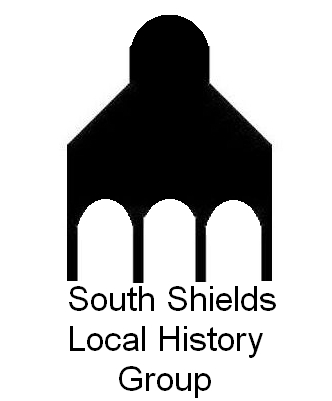British – The early history is by no means certain but the earliest inhabitants were the Celtic tribe of Brigantes who established a settlement on the Lawe at which time was an island. The settlement was known as Caer Urfa which has been described as one of 28 Caers or British cities in the country.
One theory is that the Brigantes built four great roads of stone one of which is called “Rykenilde Street”. It is believed to have run from Menevia in West Wales through Worcester, Birmingham, Litchfield, Chesterfield, Derby and York to Tynemouth but would have terminated at Caer Urfa.
Roman – The Romans almost certainly incorporated part of the Rykenilde Street into one of their great cross-country roads – the Wreckendike Road. This left the Roman station at its west gate and proceeded along Military Road, Heugh Street, crossed the Mill Dam (River Branin) near its mouth possible by a draw bridge, continuing past the Lay Gate, Rekendyke Lane, Barnes Road, skirted the Slake. It continued through Lanchester to Chester le Street where is crossed Watling Street, the main Roman north south road.
It is interesting to see where Rekendyke the modern-day council ward derives its name from and its ancient origins.
To Sunderland – in the early 1700s a Sunderland road ran from the line of Mile End Road, Fowler Street and Westoe Lane and continued southwards along Salters trod and where the Westoe pub stands and then along the west wall of where the cemetery stands to Old Harton, Cleadon and Fulwell. The highway in its earlier days was an exceedingly lonely road not without its share of tragedies and crimes
To Newcastle – at the western side of the bridge of the Mill Dam the Newcastle road followed the line of East Holborn, Templetown, crossed the River Dean probably by a ford and circled round the edge of the Slake which was usually impassable at high water and always in a storm. Beyond the Slake, the road continued to Jarrow and on to the Newcastle.
TURNPIKES
The Turnpike Act of 1663 – Parliament increasingly took responsibility for repairing and maintaining roads from local authorities. Turnpike Acts authorised a trust to levy tolls on those using the road and to use that income to repair and improve the road. They could also purchase property to widen or divert existing roads. The trusts were not-for-profit and maximum tolls were set. The ‘turnpike’ was the gate which blocked the road until the toll was paid. Two such turnpikes include the Sunderland and Newcastle Turnpikes.
The Sunderland Turnpike – It is uncertain when the lanes and roads to Sunderland were upgraded as a result of the Turnpike Act but it is likely to have been sometime in the 18th century. The first stagecoach service into the town commenced in 1806 and it is recorded as using the Sunderland Turnpike.
The original Ferry Landing was close to just below where Mile End Road ends. The Sunderland Turnpike served the ferry service and from the ferry landing climbed up the face of the cliff along Long Row (up to what is now River Drive) and thence along Mile End Road, Fowler Street, Westoe Lane (The Long Bank), then Sunderland Road through Harton, Cleadon and Fulwell. There were toll gates at the Jingling Gate where Claypath Lane starts and another at Caldwell.
The kink in the road’s passage at Westoe which diverted it onto what is now Sunderland Road in the early 18th century “to the easier gradient of the Long Bank” (Westoe Lane).
The Newcastle Turnpike – with Newcastle and the west, communication remained very defective until Royal Assent was granted in 1826 for the making and maintenance of a turnpike from “the pavement in the south west corner of the Market Place along the road over the Jarrow Slake in the parish of Westoe to the White Mere Pool in the parish of Boldon. Also a branch road to East Boldon from the turnpike at Jarrow Slake through Harton, Westoe and Whitburn. (Harton Lane from the Slake to Harton). Its construction proved a costly business. In addition to bridges at Dean Burn and Templetown, a quay half a mile long had to be built to carry the road across the head of the Slake above the high water mark.

STAGECOACH SERVICES
Inauguration – the first stagecoach service came to South Shields in 1806 when a Royal Mail Coach ran a daily service from York. It departed from the Golden Lion in King Street which was its coaching house at 8 am every morning arriving back at 7 am the following morning. The emphasis was on the carriage of mail but it also carried passengers.

To Leeds – In 1833 a new mail coach service ran to Leeds leaving Leeds at 5.30 pm and arriving in Shields at 5.15am leaving on the return journey at 8.15 pm arriving at Leeds at 7.30 am.

Around the same time the Royal Pilot departed from the Golden Lion for Leeds to make connection with coaches to Liverpool and Manchester.

Expedition departed from the Cross Keys in the Market Place at 5.30 am for Leeds connecting with coaches for London, Liverpool and Manchester.


To Sunderland – Lion and Hope ran from the Golden Lion (Hope twice a day), George ran from the Rose and Crown in the Market Place and Friends twice a day from the same hotel, and Industry ran daily from the Cross Keys.

Cars and gigs for different places also ran from the Golden Lion, Cross Keys, Rose and Crown and Market Place Tavern in the Market Place and the Mariners Arms in east King Street.

Sources:
Written by Les Snaith with the main source being George B Hodgson’s Borough of South Shields
British Newspaper Archives
Photos:
South Tyneside Libraries
Wikipedia
